10
Showing 2451–2500 of 6732 results
-
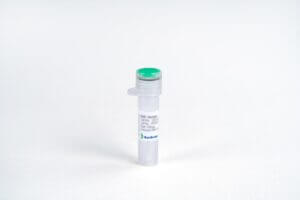
FGF-21, His, Human
$72.45 Add to cart View Product DetailsFGF-21, also known as fibroblast growth factor-21 and FGFL, is a secreted growth factor belonging to theheparin-binding growth factor family. It is produced by hepatocytes in response to fatty acid stimulation. FGF-21 couples with its co-factor beta-Klotho to signal through FGFR1c and FGFR4. Signal transduction results in insulin-independent uptake of glucose by adipocytes. Clinical administration of FGF-21 induces energy expenditure, fat utilization and lipid excretion.
-

FGF-21, Human
$68.14 Add to cart View Product DetailsFibroblast Growth Factor-21 (FGF-21) is a metabolic cytokine belonging to the heparin-binding FGF family. Along with FGF-19/15 and FGF-23, FGF-21 is categorized as a member of the atypical FGF subfamily, as it must be complexed to the Klotho co-receptor in order to bind to the FGF receptors and activate the downstream signaling pathway. In vivo FGF-21 is expressed in liver, pancreas, adipose tissue, and skeletal muscle, and it plays a central role in the energy metabolism. The expression of FGF-21 is stimulated by free fatty acids and insulin resistant states and is correlated with whole-body insulin resistance. FGF-21 activates glucose uptake in adipocytes and increases insulin sensitivity, implicating it as a novel target with potential anti-diabetic properties.
-

FGF-21, Mouse
$68.14 Add to cart View Product DetailsFibroblast growth factor-21 (FGF21) belongs to the large FGF family which has at least 23 members. Along with FGF-19/15 and FGF-23, FGF-21 is categorized as a member of the atypical FGF subfamily, as it must be complexed to the Klotho co-receptor in order to bind to the FGF receptors and activate the downstream signaling pathway. FGF family members possess broad mitogenic and cell survival activities and are involved in a variety of biological processes including embryonic development, cell growth, morphogenesis, tissue repair, tumor growth and invasion.
-

FGF-6, Human
$68.14 Add to cart View Product DetailsFibroblast Growth Factor-6 (FGF-6) is a cytokine belonging to the heparin-binding FGF family, and is structurally related to other members of FGF family, particularly FGF-4. In vivo, FGF-6 exhibits an expression profile predominantly restricted tothe myogenic lineage, and it preferentially binds to two of the FGF receptors: FGFR1 and FGFR4. FGF-6 functions in muscle regeneration, myoblast proliferation and migration, and muscle differentiation in a dose-dependent manner. In vivo high concentration of recombinant FGF-6 up-regulates and down-regulates FGFR1 and FGFR4, respectively, as FGFR1 promotes the proliferation while FGFR4 promotes the differentiation in the muscle. Besides its dual function in muscle regeneration, FGF-6 may act as a regulator of bone metabolism as well.
-

FGF-8, Human
$68.14 Add to cart View Product DetailsFibroblast Growth Factor-8 (FGF-8) is a heparin-binding growth factor of the FGF family. There are 4 known forms of FGF8 produced by alternative splicing: FGF8a, FGF-8b, FGF-8e and FGF-8f. The human and mouse FGF8b are identical of aa sequences. FGF-8 plays an important role in the regulation of embryonic development, cell proliferation, cell differentiation and cell migration. FGF-8 is required for normal brain, eye, ear and limb development during embryogenesis. It is also required for normal development of the gonadotropin- releasing hormone (GnRH) neuronal system.
-

FGF-8a, Human
$68.14 Add to cart View Product DetailsFibroblast Growth Factor 8a (FGF-8a) is a cytokine belonging to the heparin-binding FGF family, which has at least 23 members. FGF-8 has 8 different isoforms, named FGF-8a through FGF-8h. Different FGF-8 isoforms have different affinities to the receptors, and thus participate in different signaling cascade pathways. FGF-8 has very widespread expression during embryonic development, and is an organizer and inducer for gastrulation, somitogenesis, morphogenesis, and limb induction. However, FGF-8 is also a potential oncogene: in normal adult cells, FGF-8 has very low expression, but FGF-8 is highly expressed in cancer cells of breast, prostate, and ovarian tumors. FGF-8 promotes tumor angiogenesis by increasing neovascularization, and induces osteoblastic differentiation.
-

FGF-8e, Human
$63.83 Add to cart View Product DetailsFibroblast Growth Factor 8e (FGF-8e) is a cytokine belonging to the heparin-binding FGF family, which has at least 23 members. FGF-8 has 8 different isoforms, named FGF-8a through FGF-8h. Different FGF-8 isoforms have different receptor affinities, and thus participate in different signaling cascade pathways. FGF-8 has widespread expression during embryonic development, promoting gastrulation, somitogenesis, morphogenesis, and limb formation. FGF-8 also has oncogenic potential. While in normal cells FGF-8 is expressed at very low levels, in breast, prostate and ovarian cancer FGF-8 is highly expressed.FGF-8 promotes tumor angiogenesis by increasing neovascularization, and inducing osteoblastic differentiation.
-

FGF-9, Human
$86.25 Add to cart View Product DetailsFibroblast Growth Factor-9 (FGF-9) is a heparin binding growth factor that belongs to the fibroblast growth factor (FGF) family. FGF family members possess broad mitogenic and cell survival activities, and are involved in a variety of biological processes, including embryonic development, cell growth, morphogenesis, tissue repair, tumor growth and invasion. FGF-9 was isolated as a secreted factor that exhibits a growth-stimulating effect on cultured glial cells. In nervous system, this protein is produced mainly by neurons and may be important for glial cell development.
-
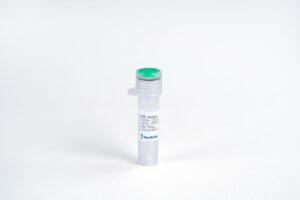
FGF-acidic, Human
$43.13 Add to cart View Product DetailsFibroblast Growth Factor- acidic (FGF-acidic), also known as FGF-1 and endothelial cell growth factor, is a member of the FGF family which currently contain 23 members. FGF acidic and basic, unlike the other members of the family, lack signal peptides and are apparently secreted by mechanisms other than the classical protein secretion pathway. FGF acidic has been detected in large amounts in the brain. Other cells known to express FGF acidic include hepatocytes, vascular smooth muscle cells, CNS neurons, skeletal muscle cells, fibroblasts, keratinocytes, endothelial cells, intestinal columnar epithelium cells and pituitary basophils and acidophils. As with other FGF’s, FGF acidic exhibits considerable species cross reactivity. FGF acidic and FGF basic stimulate the proliferation of all cells of mesodermal origin, and many cells of neuroectodermal, ectodermal and endodermal origin.
-

FGF-acidic, Mouse
$43.13 Add to cart View Product DetailsFibroblast Growth Factor- acidic (FGF-acidic) is a mitogen targeting at the endothelial cells, and belongs to the heparin binding FGF family, which contains 22 members. FGF-acidic binds to the receptor family FGFR1-4 in vivo with the assistance of heparin. However, along with FGF -basic, FGF-acidic lacks the signal peptide segment, and thus is not secreted via endoplasmic reticulum (ER) and Golgi bodies. Studies have shown that FGF-acidic is highly regulated, and it is a direct angiogenesis factor. If unregulated, angiogenesis could contribute to several diseases including arthritis, diabetes, ocular neovascularization, and especially tumors. Therefore, FGF-acidic is treated as a potential oncogene, and its overexpression is correlated tightly with several cancers.
-

FGF-basic (145aa), Human
$43.13 Add to cart View Product DetailsFibroblast Growth Factor-basic (FGF-basic), also known as FGF-2, is a pleiotropic cytokine and one of the prototypic members of the heparin-binding FGF family. Like other FGF family members, FGF-basic has the β trefoil structure. In vivo, FGF-basic is produced by a variety of cells, including cardiomycotes, fibroblasts, and vascular cells. FGF-basic regulates a variety of processes including cell proliferation, differentiation, survival, adhesion, motility, apoptosis, limb formation and wound healing. FGF-basic can be tumorigenic due to its role in angiogenesis and blood vessel remodeling. The angiogenic effects of FGF-basic can produce beneficial cardioprotection during acute heart injury.
-

FGF-basic (146aa), Human
$43.13 Add to cart View Product DetailsFibroblast Growth Factor-basic (FGF-basic), also known as FGF-2, is a pleiotropic cytokine and one of the prototypic members of the heparin-binding FGF family. Like other FGF family members, FGF-basic has the β trefoil structure. In vivo, FGF-basic is produced by a variety of cells, including cardiomycotes, fibroblasts, and vascular cells. FGF-basic regulates a variety of processes including cell proliferation, differentiation, survival, adhesion, motility, apoptosis, limb formation and wound healing. FGF-basic can be tumorigenic due to its role in angiogenesis and blood vessel remodeling. The angiogenic effects of FGF-basic can produce beneficial cardioprotection during acute heart injury.
-

FGF-basic (154aa), Human
$43.13 Add to cart View Product DetailsFibroblast Growth Factor-basic (FGF-basic), also known as FGF-2, is a pleiotropic cytokine and one of the prototypic members of the heparin-binding FGF family. Like other FGF family members, bFGF has the β trefoil structure. In vivo, bFGF is produced by a variety of cells, including cardiomycotes, fibroblasts, and vascular cells. bFGF regulates a variety of processes including cell proliferation, differentiation, survival, adhesion, motility, apoptosis, limb formation and wound healing. bFGF can be tumorigenic due to its role in angiogenesis and blood vessel remodeling. The angiogenic effects of bFGF can produce beneficial cardioprotection during acute heart injury.
-

FGF-basic, Bovine
$43.13 Add to cart View Product DetailsFibroblast Growth Factor-basic (FGF-basic), also known as FGF-2, is a pleiotropic cytokine and one of the prototypic members of the heparin-binding FGF family. Like other FGF family members, FGF-basic has the β trefoil structure. In vivo, FGF-basic is produced by a variety of cells, including cardiomycotes, fibroblasts, and vascular cells. FGF-basic regulates a variety of processes including cell proliferation, differentiation, survival, adhesion, motility, apoptosis, limb formation and wound healing. FGF-basic can be tumorigenic due to its role in angiogenesis and blood vessel remodeling. The angiogenic effects of FGF-basic can produce beneficial cardioprotection during acute heart injury.
-
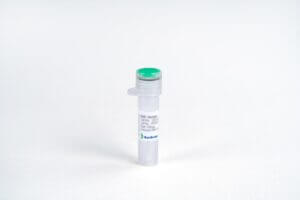
FGF-basic, Mouse
$43.13 Add to cart View Product DetailsFibroblast Growth Factor-basic (FGF-basic), also known as HBGF-2, is a non-glycosylated heparin-binding growth factor that belongs to the FGF family. FGF-basic is present in basement membranes and in the subendothelial extracellular matrix of blood vessels. FGF-basic signals through FGFR1, 2, 3 and 4 that plays an important role in the regulation of cell survival, cell division, angiogenesis, cell differentiation and cell migration.
-
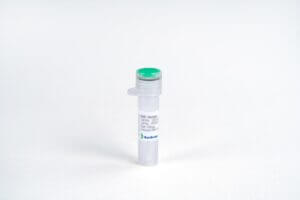
FGF-basic, Rat
$43.13 Add to cart View Product DetailsFibroblast Growth Factor-basic (FGF-basic), also known as FGF-2, is a pleiotropic cytokine and one of the prototypic members of the heparin-binding FGF family. Like other FGF family members, FGF-basic has the β trefoil structure. In vivo, FGF-basic is produced by a variety of cells, including cardiomycotes, fibroblasts, and vascular cells. FGF-basic regulates a variety of processes including cell proliferation, differentiation, survival, adhesion, motility, apoptosis, limb formation and wound healing. FGF-basic can be tumorigenic due to its role in angiogenesis and blood vessel remodeling. The angiogenic effects of FGF-basic can produce beneficial cardioprotection during acute heart injury.
-

FGF-basic, Salmon
$63.83 Add to cart View Product DetailsFibroblast Growth Factor-basic (FGF-basic), also known as FGF-2, is a pleiotropic cytokine and one of the prototypic members of the heparin-binding FGF family. Like other FGF family members, FGF-basic has the β trefoil structure. In vivo, FGF-basic is produced by a variety of cells, including cardiomyocytes, fibroblasts, and vascular cells. FGF-basic regulates a variety of processes including cell proliferation, differentiation, survival, adhesion, motility, apoptosis, limb formation and wound healing. FGF-basic can be tumorigenic due to its role in angiogenesis and blood vessel remodeling. The angiogenic effects of FGF-basic can produce beneficial cardioprotection during acute heart injury.
-
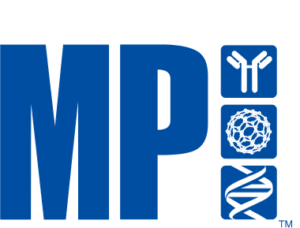
Fibrinogen, fraction I, protein content ~75%
$1,056.55 Add to cart View Product DetailsFibrinogen Fraction I
-

Ficoll®
$84.13 Add to cart View Product DetailsFicoll® is a proven medium for density gradient centrifugation.
-

Filter Material PP DLW, 20 um Pore Size, Pack of 10
$1,990.65 Add to cart View Product DetailsFilter Material PP DLW, 20 um Pore Size, Pack of 10
-

Filter Material PP DLW, 30 um Pore Size, Pack of 10
$1,824.71 Add to cart View Product DetailsFilter Material PP DLW, 30 um Pore Size, Pack of 10
-

Filter Material PP DLW, 7 um Pore Size, Pack of 10
$1,990.65 Add to cart View Product DetailsFilter Material PP DLW, 7 um Pore Size, Pack of 10
-

Filter System, Fritted Glass, 100 mL
$119.35 Add to cart View Product Details* Effective Filtration Area: 9.6 cm2 using 47 mm diam. Filter, prefilter diam.: 35 mm (not included)
* Sterilization: Autoclavable (at 121°C/250°F for 20 minutes) -

Filter System, Fritted Glass, 300 mL
$120.99 Add to cart View Product Details* Effective Filtration Area: 9.6 cm2 using 47 mm diam. Filter, prefilter diam.: 35 mm (not included)
* Sterilization: Autoclavable (at 121°C/250°F for 20 minutes) -

Filter System, Stainless Steel Screen, 100 mL
$145.51 Add to cart View Product Details* Effective Filtration Area: 9.6 cm2 using 47 mm diam. Filter, prefilter diam.: 35 mm (not included)
* Sterilization: Autoclavable (at 121°C/250°F for 20 minutes) -

Filter System, Stainless Steel Screen, 300 mL
$156.38 Add to cart View Product Details* Effective Filtration Area: 9.6 cm2 using 47 mm diam. Filter, prefilter diam.: 35 mm (not included)
* Sterilization: Autoclavable (at 121°C/250°F for 20 minutes) -

Filter Tip 0.1-10 ul, extended, single tray
$265.65 Add to cart View Product DetailsFilter Tip 0.1-10 ul, extended, single tray
-
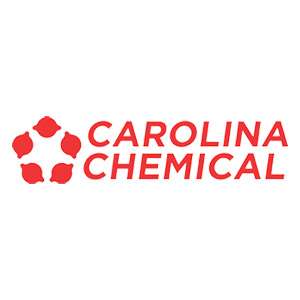
Finasteride Powder – 10G
$81.88 Add to cart View Product DetailsCAS Number 98319-26-7 Molecular Weight 372.54Molecular Formula C23H36N2O2 -

Firocoxib
$198.95 Add to cart View Product DetailsFirocoxib
-

FISH DIET
$438.43 Add to cart View Product DetailsFISH DIET
-

FISH DIET CHANNEL CATFISH
$478.23 Add to cart View Product DetailsFISH DIET CHANNEL CATFISH
-

Fladrafinil Powder – 10G
$65.00 Add to cart View Product DetailsCAS Number 90212-80-9 Molecular Weight 325.33 Molecular Formula C15H13F2NO3S -
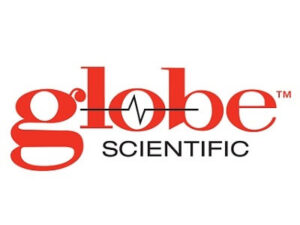
Flask, PP, Volumetric with Screw Cap, 25
$179.47 Add to cart View Product Details0mL
-

Flask, PP, Volumetric with Screw Cap, 50
$205.00 Add to cart View Product Details0mL
-
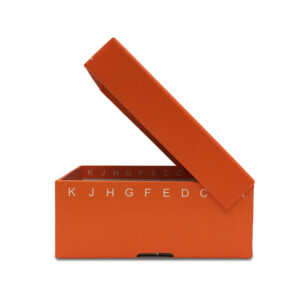
FlipTop™ Carboard freezer box w/ attached hinged lid, 2 inch, 81-place, orange, 5/pk
$12.79 Add to cart View Product DetailsFlipTop™ Carboard freezer box w/ attached hinged lid, 2 inch, 81-place, orange, 5/pk
-

Flt-3L, His, Mouse
$94.88 Add to cart View Product DetailsFlt3L, also known as Fms-related tyrosine kinase 3 ligand and SL cytokine, is a single-pass type I membrane protein. It is expressed by stromal cells and T cells. Flt3L signals through tyrosine kinase receptor Flt3/Flk2 to stimulate the proliferation of early hematopoietic progenitor cells. It synergizes with other growth factors, such as GM-CSF, IL-3 and CSF, to promote the differentiation of both myeloid and lymphoid cells. Alternative splicing and proteolytic cleavage of membrane-bound Flt3L generates a soluble extracellular domain (ECD) isoform with full biological activity.
-

Flt-3L, Human
$86.25 Add to cart View Product DetailsFms-related tyrosine kinase 3 ligand (Flt3L) is growth fator stimulates the proliferation and differentiation of hematopoietic multipotent progenitors and promotes proliferation of NK cells and dendritic cell subgroups by combination with other growth factors. Flt3L is produced by T cells and stromal fibroblasts, and targeted various cells including hematopoietic stem cells, B cells, T cells, dendritic cells, and NK cells. Flt3L binds to it cognate tyrosine kinase receptor Flt3 and activates JAK/STAT signaling pathway.Flt3L is a hematopoietic four helical bundle cytokine with structurally homologous to stem cell factor (SCF) and colony stimulating facor 1 (CSF-1) demonstrated four conserved cysteines and two glycosylation sites. Flt3L naturally as a non-disulfide-linked homodimer with multiple isoforms. The extracellular portion is approximately 160 amino acid residues in length and the cytoplasmic segment is approximately 20-30 amino acid residues in length.
-

Flubendazole, NeuroPure
$177.89 Add to cart View Product DetailsFlubendazole, NeuroPure
-
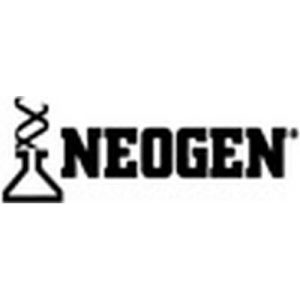
Fluid Thioglycollate Medium, 10 kg
$1,591.78 Add to cart View Product DetailsFluid Thioglycollate Medium, 10 kg
-

Flunixin Meglumine, USP
$25,427.41 Add to cart View Product DetailsFlunixin Meglumine, USP
-

FLUORESCEIN DIACETATE
$130.38 Add to cart View Product DetailsFLUORESCEIN DIACETATE
-
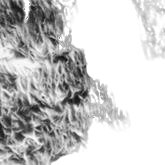
FLUOROTRANS 0.2UM 7X8.4CM 10/PK
$151.57 Add to cart View Product DetailsFLUOROTRANS 0.2UM 7X8.4CM 10/PK
-

FluoroTrans(R) PVDF Transfer Membrane – 13 x 14 cm sheets
$302.45 Add to cart View Product DetailsFluoroTrans(R) PVDF Transfer Membrane – 13 x 14 cm sheets
-

FluoroTrans(R) PVDF Transfer Membrane – 7 x 8.4 cm sheets
$174.23 Add to cart View Product DetailsFluoroTrans(R) PVDF Transfer Membrane – 7 x 8.4 cm sheets
-

FluoroTrans(R) W PVDF Transfer Membrane – 10 x 15 cm sheets
$269.10 Add to cart View Product DetailsFluoroTrans(R) W PVDF Transfer Membrane – 10 x 15 cm sheets
-

FluoroTrans(R) W PVDF Transfer Membrane – 20 x 20 cm sheets
$431.25 Add to cart View Product DetailsFluoroTrans(R) W PVDF Transfer Membrane – 20 x 20 cm sheets
-

FluoroTrans(R) W PVDF Transfer Membrane – 7 x 9 cm sheets
$148.41 Add to cart View Product DetailsFluoroTrans(R) W PVDF Transfer Membrane – 7 x 9 cm sheets
-
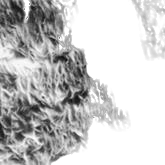
FLUORTRAN W 0.2um 7CMX9CM 10/PK
$129.10 Add to cart View Product DetailsFLUORTRAN W 0.2um 7CMX9CM 10/PK
-

Fluoxetine Hydrochloride, USP
$23,577.04 Add to cart View Product DetailsFluoxetine Hydrochloride, USP
-

Fluphenazine dihydrochloride
$523.58 Add to cart View Product DetailsFluphenazine dihydrochloride






